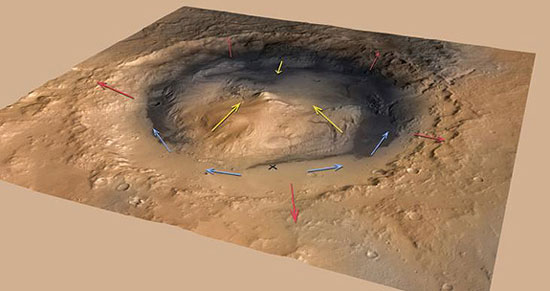 Researchers suggest that Mars' roughly 3.5-mile high Mount Sharp most likely emerged as strong winds carried dust and sand into Gale Crater where the mound sits. If correct, the research could dilute expectations that the mound is the remnant of a massive lake, which would have important implications for understanding Mars' past habitability.
Researchers suggest that Mars' roughly 3.5-mile high Mount Sharp most likely emerged as strong winds carried dust and sand into Gale Crater where the mound sits. If correct, the research could dilute expectations that the mound is the remnant of a massive lake, which would have important implications for understanding Mars' past habitability.
May 6th, 2013
Read more
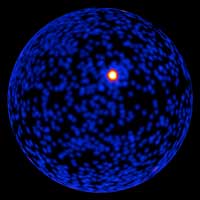 A record-setting blast of gamma rays from a dying star in a distant galaxy has wowed astronomers around the world. The eruption, which is classified as a gamma-ray burst, or GRB, and designated GRB 130427A, produced the highest-energy light ever detected from such an event.
A record-setting blast of gamma rays from a dying star in a distant galaxy has wowed astronomers around the world. The eruption, which is classified as a gamma-ray burst, or GRB, and designated GRB 130427A, produced the highest-energy light ever detected from such an event.
May 5th, 2013
Read more
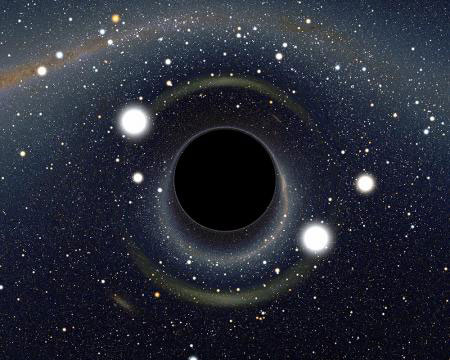 A new kind of cosmic flash may reveal something never seen before: the birth of a black hole.
A new kind of cosmic flash may reveal something never seen before: the birth of a black hole.
May 5th, 2013
Read more
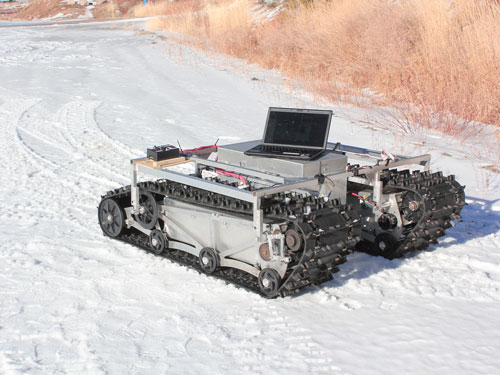 NASA's newest scientific rover is set for testing May 3 through June 8 in the highest part of Greenland.
NASA's newest scientific rover is set for testing May 3 through June 8 in the highest part of Greenland.
May 3rd, 2013
Read more
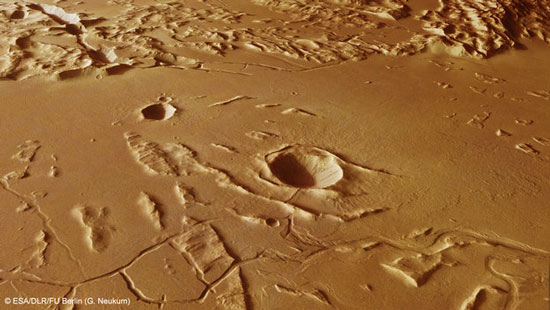 Giant landslides, lava flows and tectonic forces are behind this dynamic scene captured recently by ESA's Mars Express of a region scarred by the Solar System's largest volcano, Olympus Mons.
Giant landslides, lava flows and tectonic forces are behind this dynamic scene captured recently by ESA's Mars Express of a region scarred by the Solar System's largest volcano, Olympus Mons.
May 3rd, 2013
Read more
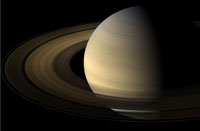 A University of Iowa undergraduate student has discovered that a process occurring in Saturn's magnetosphere is linked to the planet's seasons and changes with them, a finding that helps clarify the length of a Saturn day and could alter our understanding of the Earth's magnetosphere.
A University of Iowa undergraduate student has discovered that a process occurring in Saturn's magnetosphere is linked to the planet's seasons and changes with them, a finding that helps clarify the length of a Saturn day and could alter our understanding of the Earth's magnetosphere.
May 3rd, 2013
Read more
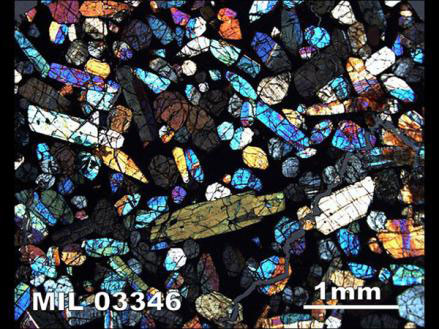 In an effort to determine if conditions were ever right on Mars to sustain life, a team of scientists, including a Michigan State University professor, has examined a meteorite that formed on the red planet more than a billion years ago.
In an effort to determine if conditions were ever right on Mars to sustain life, a team of scientists, including a Michigan State University professor, has examined a meteorite that formed on the red planet more than a billion years ago.
May 2nd, 2013
Read more
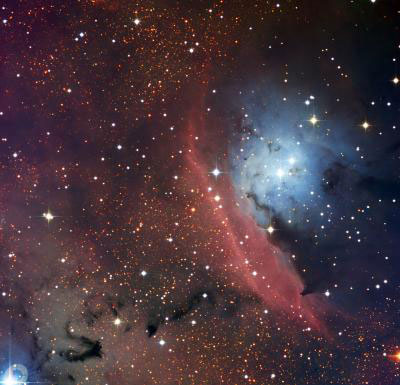 The Danish 1.54-meter telescope located at ESO's La Silla Observatory in Chile has captured a striking image of NGC 6559, an object that showcases the anarchy that reigns when stars form inside an interstellar cloud.
The Danish 1.54-meter telescope located at ESO's La Silla Observatory in Chile has captured a striking image of NGC 6559, an object that showcases the anarchy that reigns when stars form inside an interstellar cloud.
May 2nd, 2013
Read more
HIFI has opened up new window to explore the cosmos.
May 2nd, 2013
Read more
While Fermi is in fine shape today, continuing its mission to map the highest-energy light in the universe, the story of how it sidestepped a potential disaster offers a glimpse at an underappreciated aspect of managing a space mission: orbital traffic control.
May 1st, 2013
Read more
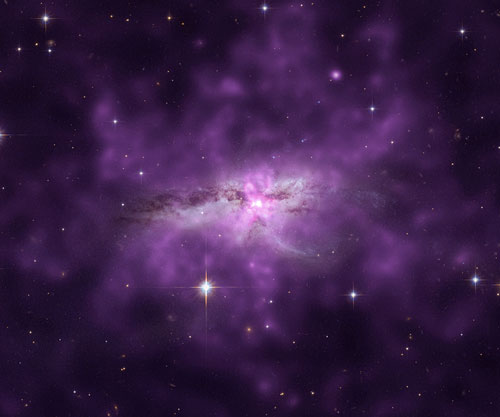 Scientists have used Chandra to make a detailed study of an enormous cloud of hot gas enveloping two large, colliding galaxies. This unusually large reservoir of gas contains as much mass as 10 billion Suns, spans about 300,000 light years, and radiates at a temperature of more than 7 million degrees.
Scientists have used Chandra to make a detailed study of an enormous cloud of hot gas enveloping two large, colliding galaxies. This unusually large reservoir of gas contains as much mass as 10 billion Suns, spans about 300,000 light years, and radiates at a temperature of more than 7 million degrees.
Apr 30th, 2013
Read more
As planets age they become darker and cooler. Saturn however is much brighter than expected for a planet of its age - a question that has puzzled scientists since the late 1960s. New research has revealed how Saturn keeps itself looking young and hot.
Apr 30th, 2013
Read more
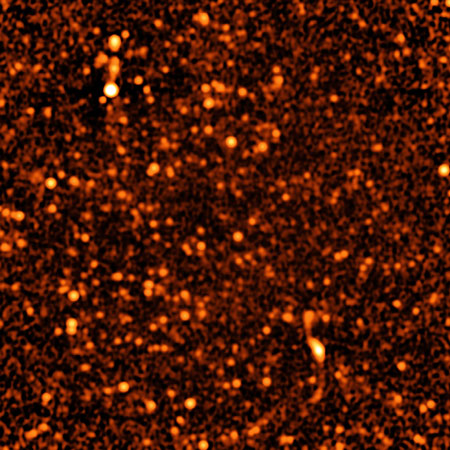 Staring at a small patch of sky for more than 50 hours with the ultra-sensitive Karl G. Jansky Very Large Array (VLA), astronomers have for the first time identified discrete sources that account for nearly all the radio waves coming from distant galaxies.
Staring at a small patch of sky for more than 50 hours with the ultra-sensitive Karl G. Jansky Very Large Array (VLA), astronomers have for the first time identified discrete sources that account for nearly all the radio waves coming from distant galaxies.
Apr 30th, 2013
Read more
NASA, the U.S. Agency for International Development (USAID), the U.S. State Department and Nike have issued a challenge to identify 10 game-changing innovations that could enable fabric systems to enhance global economic growth, drive human prosperity and replenish the planet's resources.
Apr 29th, 2013
Read more
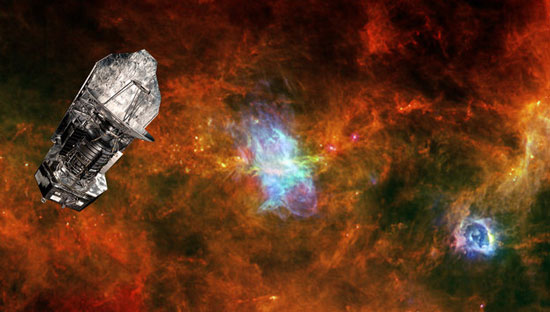 ESA's Herschel space observatory has exhausted its supply of liquid helium coolant, ending more than three years of pioneering observations of the cool Universe.
ESA's Herschel space observatory has exhausted its supply of liquid helium coolant, ending more than three years of pioneering observations of the cool Universe.
Apr 29th, 2013
Read more
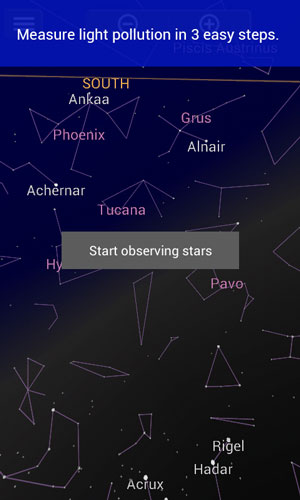 Researchers from the German 'Loss of the Night' project have developed an app for Android smart phones, which counts the number of visible stars in the sky. The data from the app will be used by scientists to understand light pollution on a world wide scale.
Researchers from the German 'Loss of the Night' project have developed an app for Android smart phones, which counts the number of visible stars in the sky. The data from the app will be used by scientists to understand light pollution on a world wide scale.
Apr 29th, 2013
Read more
A University of Washington astronomer is using Earth's interstellar neighbors to learn the nature of certain stars too far away to be directly measured or observed, and the planets they may host.
Apr 26th, 2013
Read more
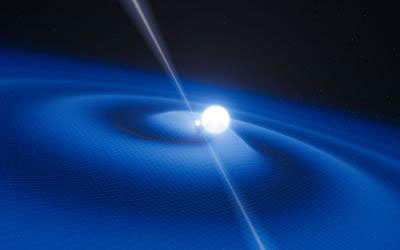 An international team of astronomers and an exotic pair of binary stars have proved that Albert Einstein's theory of relativity is still right, even in the most extreme conditions tested yet.
An international team of astronomers and an exotic pair of binary stars have proved that Albert Einstein's theory of relativity is still right, even in the most extreme conditions tested yet.
Apr 26th, 2013
Read more
 Researchers suggest that Mars' roughly 3.5-mile high Mount Sharp most likely emerged as strong winds carried dust and sand into Gale Crater where the mound sits. If correct, the research could dilute expectations that the mound is the remnant of a massive lake, which would have important implications for understanding Mars' past habitability.
Researchers suggest that Mars' roughly 3.5-mile high Mount Sharp most likely emerged as strong winds carried dust and sand into Gale Crater where the mound sits. If correct, the research could dilute expectations that the mound is the remnant of a massive lake, which would have important implications for understanding Mars' past habitability.
 Subscribe to our Space Exploration News feed
Subscribe to our Space Exploration News feed










